Theo Auffret Tourbillon à Paris: Oh Là Là! A Very French Take On Traditional Watchmaking
According to stereotype, the French like the finer things in life: wanting everything to be handmade by exquisite craftspeople in 300-year-old workshops run by the great-great-great-great-great-great-grandson of Pierre Something-or-other who uses only the best materials from local producers in the traditional French way, and living off red wine, cheese, baguettes, and exquisite pastries.
Yes, this is an extreme exaggeration, but stereotypes are born from kernels of truth, and the French are known to have proud traditions of craftspeople creating incredible objects using the skill of their hands and the sweat of their brow. There is still a solid tradition of apprenticeships in France as a parallel path to a university degree, and it is often someone in France who is the last remaining practitioner of some nearly lost art.
There is clearly something about the French culture valuing handcrafts and traditional skills that has led the country to be a leader in luxury goods. There are so many that I imagine most of us could probably name a handful of leading French luxury brands off the top of our heads, which reinforces the stereotype a bit.
So it should come as absolutely no surprise that there exists an utterly traditional young French watchmaker embodying the essence of French love of tradition and handmade craftsmanship. His name is Theo Auffret and aside from a couple of years spent in Neuchâtel (which we won’t hold against him), his training and career are exemplary of the French tradition of the apprenticeship.
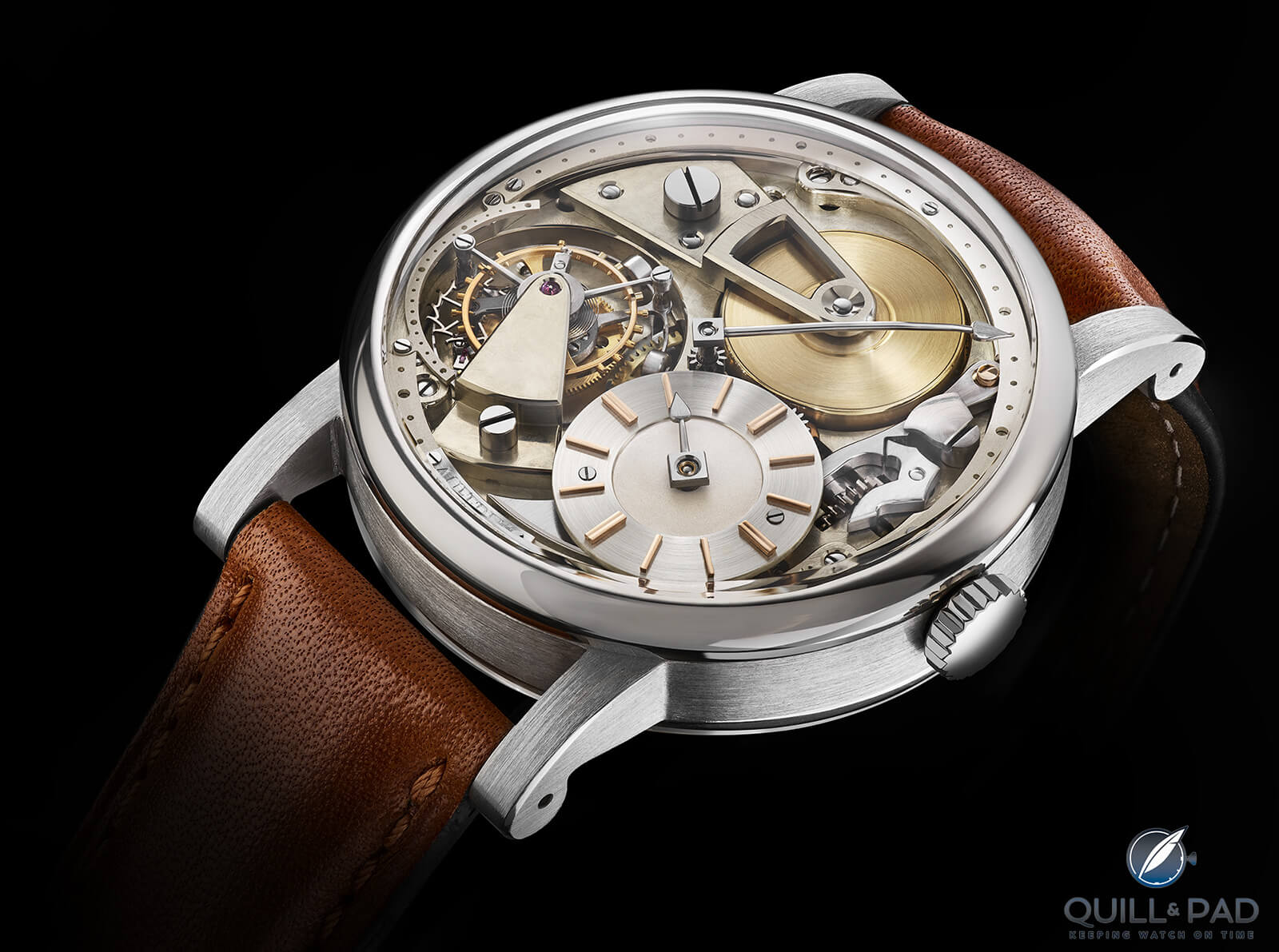
Theo Auffret Tourbillon à Paris
Auffret has called Paris his professional home for many of the last eight years (we’ll just forget about the time he went slumming across the border in Switzerland). His debut watch, the Tourbillon à Paris, is both testament to his watchmaking philosophy and a fine example of traditional French watchmaking.
Theo Auffret and the Tourbillon à Paris
Auffret began training in watchmaking restoration in parallel with his university study and in 2012 joined a professional apprenticeship program doing more restoration work. This led to another apprenticeship with Jean-Baptiste Viot and the beginning of a prototype, dubbed the Tourbillon à Paris, using Viot’s machinery after hours and on the weekends.
After completing his apprenticeship, Auffret moved across the border into Switzerland and worked with horological subcontractor Studio7H38, a company with its hands in some very awesome pieces from well-known independents.

François-Paul Journe presents the 2018 Young Talent award to Theo Auffret at the 2018 SIHH
In 2018 his technically unfinished prototype watch received recognition in the F.P. Journe and FHH Young Talents competition, which spurred Auffret to return to Paris to set up a workshop of his own and get to work making the Tourbillon à Paris a reality. By July 2019 it was ready for public release with a subscription model and is currently in the running of the 2020 Grand Prix d’Horlogerie de Genève in the Chronometry category.
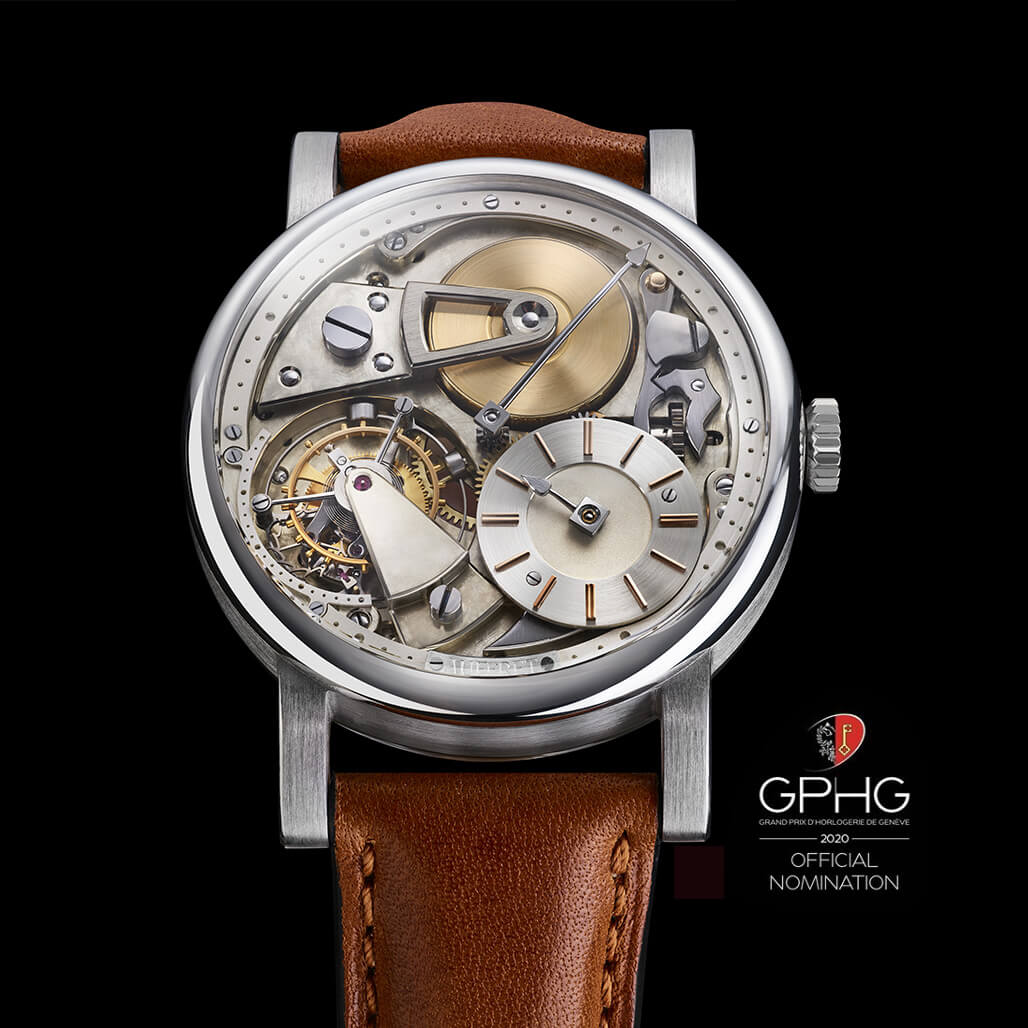
Theo Auffret’s Tourbillon à Paris GPHG is nominated in the Chronometry category
The concept is straightforward to understand: it is a simple two-hand regulator watch with a very classic tourbillon styled in the aesthetic of the handmade watches of Breguet and other watchmakers, with no dial hiding the mechanics. The reason for the handmade aesthetic is simple: the prototype was almost entirely handmade. Besides scavenging a few components from a base movement, Auffret used a very traditional construction method.
Born out of the experience with restoration, fabricating traditional components had become pretty normal for Auffret, so it makes sense that his aesthetic would follow what he knows. Plus, his mentor Jean-Baptiste Viot has a very traditional style with the clocks and watches he has created, so the path toward making his own timepiece was likely heavily influenced by his teacher.
But if it was just another handmade watch in a traditional style then we’d be done here. But it isn’t by a long shot.
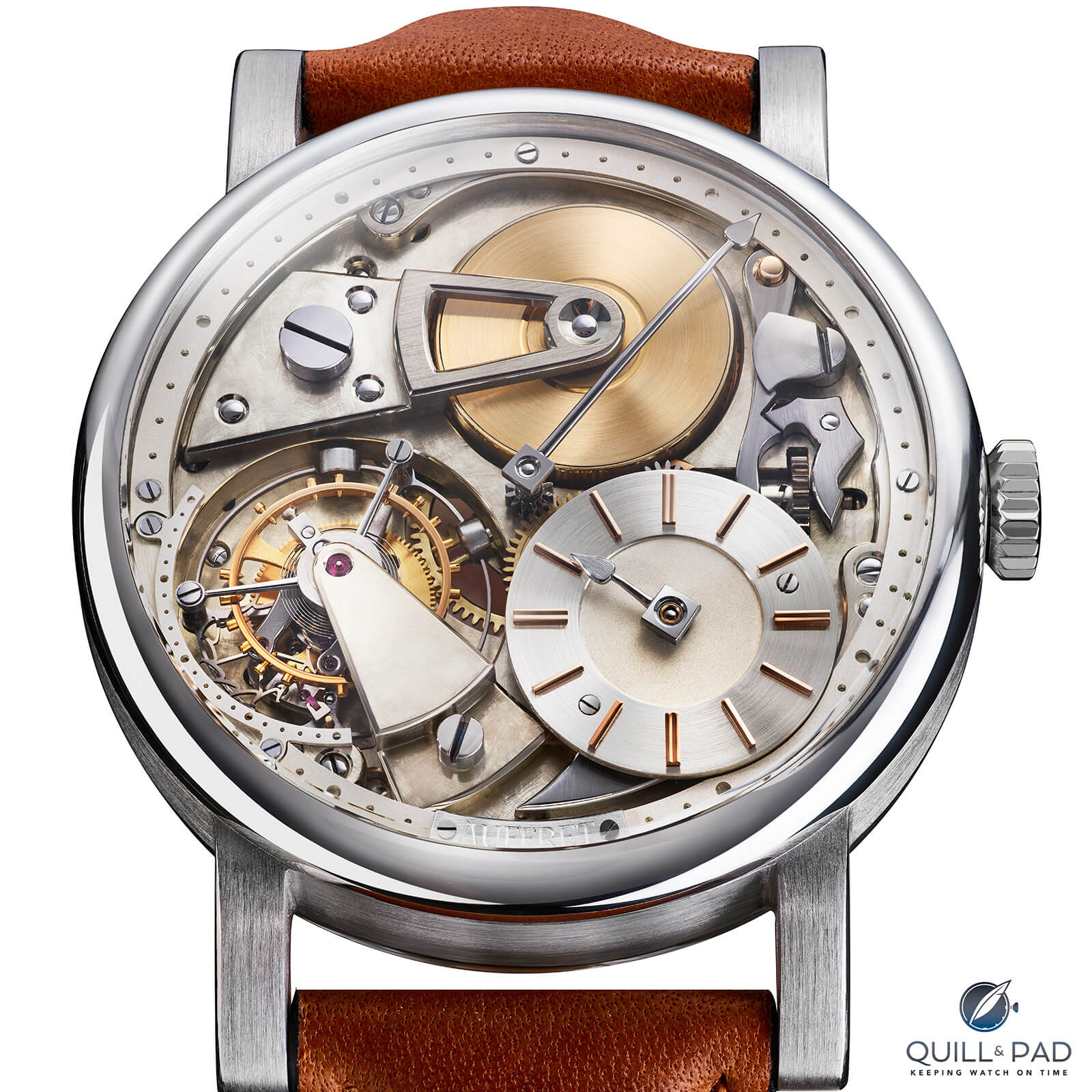
Theo Auffret Tourbillon à Paris
Tourbillon à Paris: greater than the sum of its parts
The Tourbillon à Paris is more than a “simple” handmade two hander: it is the culmination of the French way. The philosophy behind the Tourbillon à Paris is tradition: the prototype was built off hand-drawn plans and machined manually; the tourbillon is inspired by historical marine chronometers; the original handmade silver case was directly developed from techniques shared by Roger Smith; the movement architecture is based on nineteenth-century movement layouts; the bridges and plates are decorated by hand in an obscure charcoal finishing technique; and the mineral crystals are handblown glass (he wisely offers a choice of sapphire crystal as well, which by definition must be shaped by diamond-tipped tools).
Everything that could be done in a traditional way had been done is a traditional way, the process being as important to the end result as the design and precision. With the subscription series, the plan is to produce five pieces per year, which, due to the effort involved, has made Auffret concede a couple of points.
The more complex movement components will be first roughed out on a CNC machine before being finished by hand, and the handmade silver case is now being outsourced to an expert supplier, which allows expansion of the case metal option with the more standard gold, platinum, and steel alongside the silver. These seem like smart choices to me. but then I happily admit to accepting technological progress with my watchmaking.
The style of the Tourbillon à Paris is stunning as it seeks to highlight components more than the watch itself. The mainspring barrel at 12 o’clock is one of the stars of the dial side and is supported by a both a very large and aesthetically minimal bridge.
The tourbillon at 8 o’clock also has a solid, minimally designed shape. The arrangement of the tourbillon bridge and cage makes it appear as if it doesn’t have modern shock protection (it does), which goes further to create the illusion that this is an historical movement. The modernity is tactfully included in ways that don’t stand out too much. The tourbillon bridge jewel is mounted directly in the bridge without a chaton, something typical on early calibers but which became less common as time went on.
While very hard to see, this watch actually also has a 20-second sector indication on the left side of the tourbillon carriage; the pointer is the one of the three tourbillon arm screws that is not black polished; if you look closely you can just make out the small arrow shape.
The hands have square bases, something found on early handcut pieces, another aspect of the minimal design that only becomes obvious when you have to take the time and effort to produce all the parts manually.
If it weren’t for the case, the movement could likely pass for an historical caliber – even the screws don’t feel exceedingly modern.
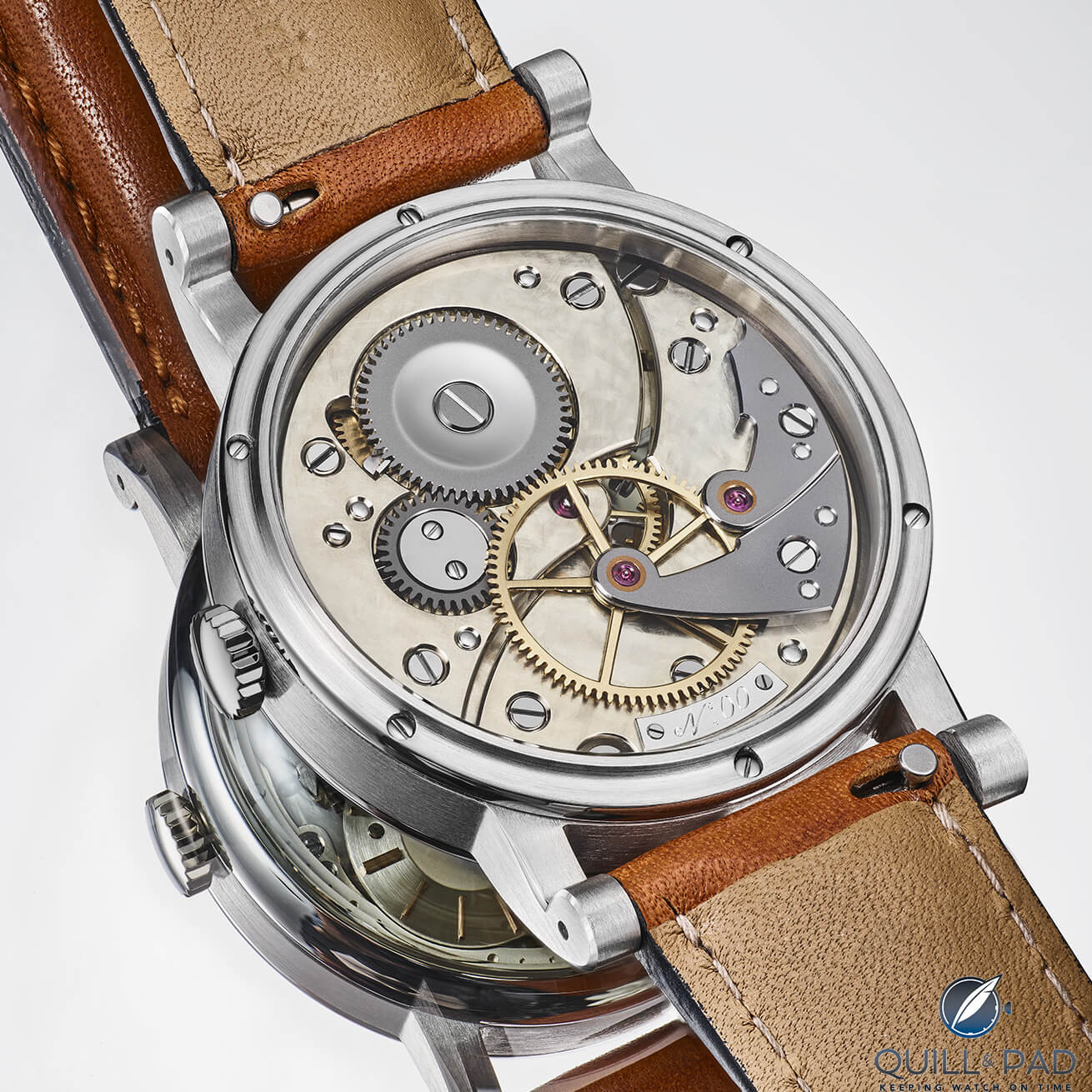
Beautiful movement visible through the display back of the Theo Auffret Tourbillon à Paris
On the rear of the movement is a pair of steel bridges (all the rest are typical German silver) supporting an oversized second wheel and the tourbillon carriage pivot. These are the components that feel the most modern of all the parts found on this watch, and they aren’t particularly modern.
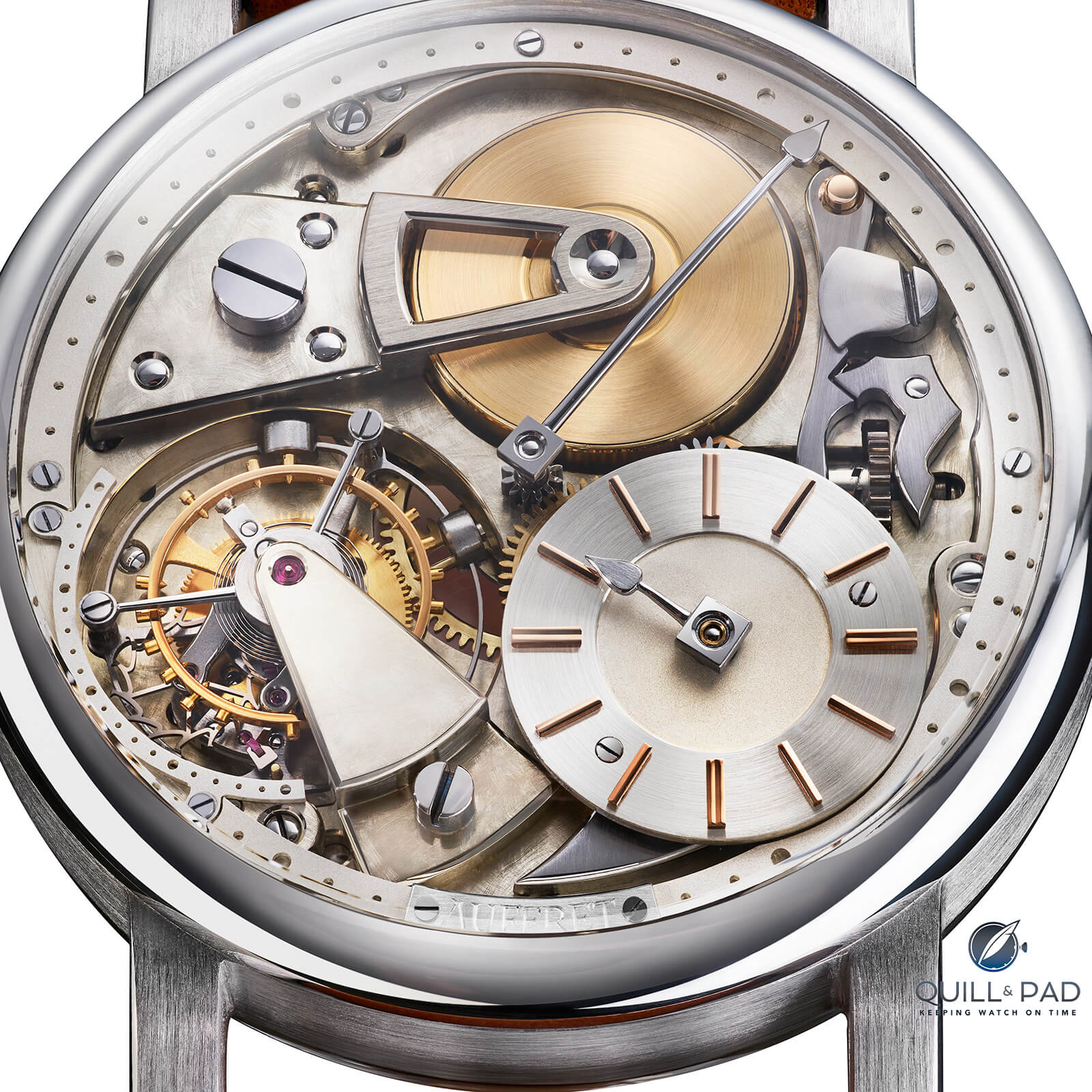
Theo Auffret Tourbillon à Paris
The ratchet wheel and winding gear feature flat polishing, concave polishing, and satin finishing, providing a pop of contrast next to the plates with charbonage finishing, an old method in which charcoal and oil are used as an abrasive to create a mottled and randomly scuffed appearance. This awesome contrast is at play strongly on both sides of the movement. With the more complicated front side being largely dominated by the tourbillon, mainspring barrel, and circularly brushed hour dial, the charbonage finishing is slightly more subdued yet still clearly an aesthetic feature.
Tradition and craft continue
The design is a function of the craft and processes, not the other way around. This demonstrates the importance of the “how” for Auffret. The yearly goal of five watches still largely handmade shows that they will mean more than just a way to make money or support building an atelier. Instead, like other purist independent watchmakers, they will become symbols of an outlook on the world.
I think this is best demonstrated by Auffret’s inclusion and promotion of the craftspeople who make his leather straps and wooden cases on his website. Most people wouldn’t even highlight subcontractors or suppliers, let alone choose ones that only work in the most traditional ways. From the conception of the watch (and likely before) through to the production of a subscription series and its accessories, Auffret has continued to pursue the French idea of the high value of tradition, hand skills, and the strive for perfection.
The Tourbillon à Paris is a fantastic example of a simple yet classic watch design combined with a clear love for doing things the hard way because those ways feel most honest. As a creator myself, I can appreciate the drive and passion to stick to tradition, highlight skills, and be inspired by past master watchmakers.
The results speak for themselves and indicate that Auffret has a bright future if he continues on the path he has curated for himself.
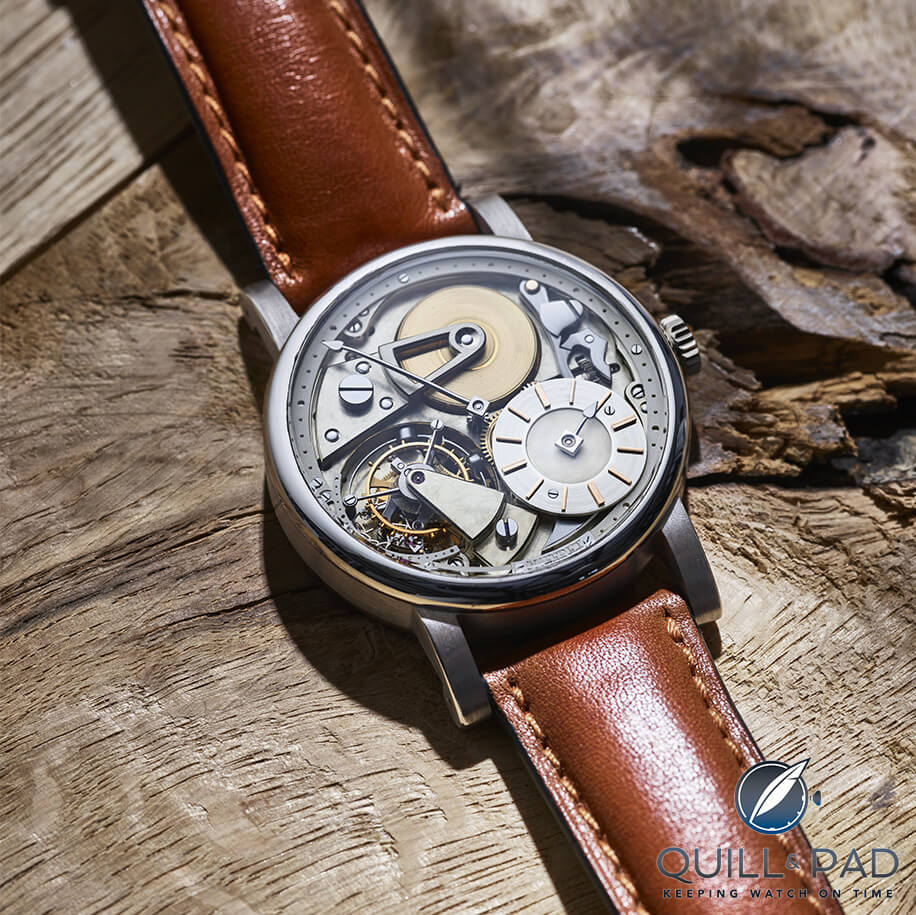
Theo Auffret Tourbillon à Paris
Since it’s a subscription series of 20 pieces, he should be completing the set by 2025, though I hope he is already developing the next model and will release it sooner rather than later. But Auffret is still young, only 25 years old, so spending his twenties building a brand is a great way to ensure his thirties are full of new ideas.
With the GPHG ceremony still looming and the Tourbillon à Paris in the running for the Chronometry category, he could also be about to get a healthy dose of publicity to help push him to the next success.
Since he has kept the Tourbillon à Paris so simple, I’m going to have to try real hard to break it down!
- Wowza Factor * 9.15 This watch stands out in any crowd, and you don’t even need to know it was handmade to have that sense of awe!
- Late Night Lust Appeal * 91.5» 897.309m/s2 It’s pretty easy to lust well into the early morning when considering such an awesome yet simple creation!
- M.G.R. * 63.1 It may only have a tourbillon but that would be grossly misrepresenting what this movement is, and it is seriously geektastic!
- Added-Functionitis * N/A I mean, is anyone even surprised? Some of the coolest watches don’t have any added functions for a reason: they are already too cool for school and can skip the Gotta-HAVE-That cream!
- Ouch Outline * 10.1 Fiberglass in your fingers! When you renovate a house, you come across some materials that you really should be careful around. Of course, it’s better if you know they are present before you grab something you shouldn’t and end up with two hands full of tiny, tiny slivers of fiberglass fibers! But . . . I am fairly certain I would take that unfortunate incident again if it meant I got my hands on the Tourbillon à Paris!
- Mermaid Moment * Wait a minute, handblown glass too! A handmade watch is awesome, finding out it has handblown glass for the crystal makes you want to start discussing flowers and centerpieces!
- Awesome Total * 900 First take the number of pieces in the subscription (20) and multiply by the number of hours of power reserve (50), then subtract the number of feet of water resistance (100) for a handmade awesome total!
For more information, please visit www.auffret-paris.com/the-subscription-series.
Quick Facts Theo Auffret Tourbillon à Paris
Case: 38.5 x 12 mm, platinum, gold, silver, or steel
Movement: tourbillon escapement, manual winding caliber, 50-hour power reserve, 21,600 vph/3 Hz frequency
Functions: hours, minutes, seconds
Limitation: 20 pieces in subscription
Price: 114,000 Swiss francs
You may also enjoy:
Destroyed Notre-Dame Cathedral Clock Restoration Boosted By Exciting Find Of Nearly Identical Clock
The Horological History Of Place Vendôme, Paris
Vive Paris And Vive La Couleur: What Berluti Has Done To Make Men’s Feet Fashionable
GaryG Goes To Paris To Pick Up Custom Boucheron Cufflinks Or How I Spent My Summer Vacation
Leave a Reply
Want to join the discussion?Feel free to contribute!



Amazing writing Joshua ,even better than Mr G.
Thank you so much, Chris! But I have to admit that Gary and I have such different styles that I often wonder if the only thing we have in common is writing about watches in English!